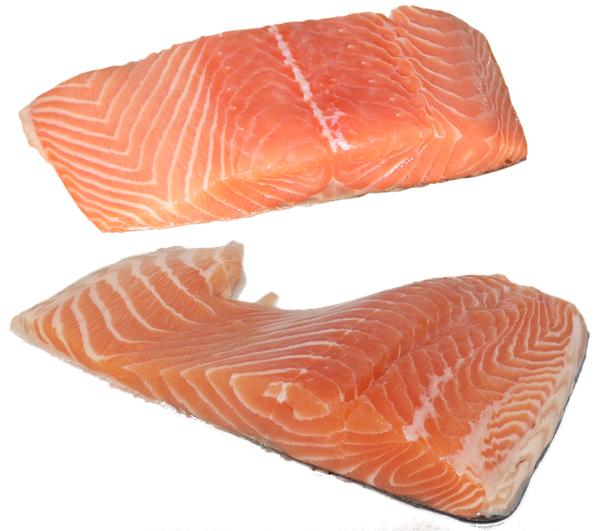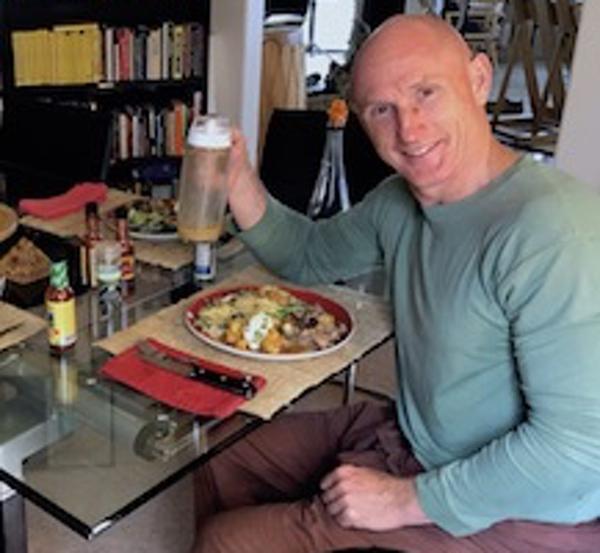How Do I Eat to Meet My Unique Ancestral Needs?
by Paul Chek

 The question below was posted on my YouTube channel in response to my recent video about the thousands of chemicals added by manufacturers to our public food supply every day.
The question below was posted on my YouTube channel in response to my recent video about the thousands of chemicals added by manufacturers to our public food supply every day.
Since what constitutes healthy eating is a common source of confusion today, I wrote a fairly comprehensive reply in the hope that all of you reading this can gain some awareness about the issue of eating for your individual needs.
Primal Instinct: Hey Paul. Hope you are having a fantastic week! I have a question regarding Primal Pattern®/metabolic typing diets. In the book, The Metabolic Typing Diet by William Wolcott, he makes mention that people should eat according to their ethnic background and you’ve mentioned it in videos such as this one and in the Primal Pattern® Diet audiobook. However, you also recommended people eat a wide variety of foods.
So how would someone from Ireland, where it’s known that people in the past have eaten nothing but potatoes and few meats, eat while also keeping a healthy balanced diet that’s tailored to his lifestyle and/or if he’s moved regions? Or what about many other areas where people like to stick to whatever’s available and it’s usually not much?
I know this is a loaded question but I feel it’s a very important one so I would greatly appreciate a little light shed on it. Personally, I eat foods that are traditional in my country but i also try out different foods that come from different regions of the world. Thanks again and enjoy your vacation!
The answer
We have unique genetic profiles, which have a significant influence on what foods our bodies can digest, metabolize, assimilate (utilize) and eliminate effectively.
If you read Nutrition and Physical Degeneration by Weston A. Price, you will see an expose of native diets from around the world. It doesn’t take long reading that book to see that the natives of different regions of the world who live in different environments eat differently, particularly when the environment dictates what is available to them.
A clear example of this difference within one country can be seen in Australia where the inland Aboriginals ate a diet of about 75 percent plant foods, insects, and small animals or about 25 percent flesh foods, while the Aboriginals living along the coast ate approximately the opposite ratio, with flesh being more dominant in their diet because of access to bigger animals and fish.
I point this out because it is a good example of how people from the same racial/ethnic backgrounds have adapted over long periods so they can thrive on what’s available to them.
Within each individual, there is a range of adaptability, regardless of race or color. Each individual’s adaptability is influenced by the immediate or actual stress factors they experience.
The greater the stress, particularly if chronic, the less adaptability they will have. You can see this in current research showing that people with high stress levels, particularly during their developmental years of childhood have a much higher incidence of food intolerance and leaky gut syndrome, as well as a higher likelihood of bacterial dysbiosis.
Limits to adaptability
A clear example of the limits to adaptability can be seen in all sorts of native populations that got swept up in the white man’s games of power, control, and dietary influence.
Look, for example, at how many Native American Indians (once very healthy people when left to their own natural way of living and eating) have become fat and suffer from adult onset diabetes (or Type II diabetes), and many other chronic ailments, including a higher propensity for alcoholism and drug addiction once they start eating a standard American diet of large amounts of carbs and processed foods and pasteurized dairy products.
Another clear example is the Eskimos or Inuit who traditionally lived off about 90 percent fat and flesh from deer, caribou, seals, whale and other animals and only about 10 percent plant foods (plants don’t grow in ice!).
When they started getting access to boxed cereals, cereal grains in general, processed sugar and tropical fruits such as pineapples and bananas, they started experiencing rotten teeth, getting fat and acquiring high amounts of Type II diabetes, and a whole host of chronic illnesses.
My point here is simply that if you were to feed an Eskimo a diet of the world’s best organic pineapples, bananas (or fruits in general) and high quality organic grains, they would have roughly the same problems (even though the foods were not toxic from commercial farming or depleted of nutrients, which is the case with what they ended up eating under the white man’s corporate influence).
Why? Their genetics and metabolic systems in general are not designed to function with such an inverted ratio of macronutrients, which at once disrupts the availability of micronutrients.
A simple analogy is that an Eskimo is more like a diesel engine and a person adapted to more carbs (such as those of tropical regions or inland Aboriginals) is more like a gasoline engine. They can handle more highly combustible fuel sources.
Another way to think of this: The engines of metabolism, like the engine of a car, must have the correct mixture of air and fuel to run efficiently. The air/fuel ratio of one make of car/engine can be radically wrong for another make of car/engine.
(For example, Audis and Fords have engines, but the specifications for air/fuel ratios can be very different, even if both engines produce the same amount of horsepower.)
What’s in your gene pool?
Now, with the advent of genetic testing, we can actually see our gene lines. What we find is often much more diverse than expected. When I got my test results back, I was shocked to see that I had about 10 or so different gene lines in me, but my family never had any idea about most of them. We always thought that we were a mix of European and Cherokee Indian, but there were genes from Spain, Mexico and even Jewish genes in the mix!
As various factions such as the Vikings, Persians, Middle Easterners, Greeks, Romans, Spaniards and, more recently, white men took over and inhabited foreign regions, they took the most beautiful women and breeding occurred, producing more variations in the gene lines, which increases diversity and survival rates in the long run.
Therefore, you may be “Irish,” and some of your ancestors ate potatoes and meat for some period, but that is likely to only account for a short amount of time, and only represents a small fraction of the places your own genes actually evolved from.
Even if you are 100 percent Irish and all of your ancestors were too, what I’m about to say is the most critical part of this whole story as it plays out today.
Due to radical shifts in the influences of our bodies, emotions and minds, resulting from chemicals in food and environment and many other factors that produce stress (plus stress the body has never been exposed to before!), each individual has a specific range of needs. Some have a wide range of nutrient needs relative to others, even among siblings in the same household.
Therefore, using the methods I teach in my Holistic Lifestyle Coaching program becomes paramount to learning to have a relationship with, and listening to, one’s body.
If, for example, due to ignorance of these factors, your parents raised you on a lot of flesh foods, or even a lot of potatoes, which may have been too narrow a range for your actual needs, and you keep eating that way out of conditioning or habit, you are likely to start having more and more chronic health challenges.
To heal, you may find that your body wants (as an example) MUCH more plant foods, such as vegetables, and a wide variety of them to recover the variety of nutrients needed to detoxify, heal and restore balance.
Problems with vegetarianism
Therefore, you may find that you need to eat very nearly vegetarian for a while. But if one gets caught in the trap of thinking, “Wow, I feel amazing on a vegetarian diet… who’d have ever known!” and stay there too long, next, you will likely have problems with hormonal imbalance, poor recovery from stress and physical activity, and a very hard time keeping muscle mass because your body is eating its own flesh to retain key hormones that are made largely from fats (and the genes may need animal fat, not avocados for example) and amino acids. I’ve seen countless cases like this!
Each step of the way, people have to test a variety of food sources to see how their body responds. You may be able to eat tomatoes and peppers from the other side of the planet, or even foods you’ve never seen or heard of until you walk into a Chinese, Hindu, or Middle Eastern market, but some of them may not work for you depending on the genus of the plant or structure of the flesh.
Modern intellectuals who base their ideas on laboratory science will tell you concepts like I’m sharing here are B.S. because an amino acid is an amino acid, and a short or long chain fatty acid is a short or long chain fatty acid.
But, what is overlooked here is that you have to effectively digest plant foods into their component parts, while animal foods must be broken down from proteins into amino acids “within your own body.”
If for any reason, that process is disrupted or incomplete (think of how many people have diminished hydrochloric acid production largely due to eating processed foods and stress, which burns out their ability to produce acid and enzymes.), you simply don’t get the carbs, fat chains and amino acids into the blood where they can be delivered to cells to be used.
Your body isn’t a laboratory
Your body is not a science lab where you add chemicals to beakers to break down proteins into amino acids. There also other energetic factors people like Rudolf Steiner describe that I won’t go into here due to length.
So, now that I’ve written an article for you, and given yet another example of what I teach in my HLC training programs in even greater detail in many regards, we get back to what I share in Primal Pattern® Eating.
If you want to be healthy today, you need to develop an intimate working relationship with your body, and let it guide you to what it “needs” to balance and heal itself based on the unique internal environment it is in at any given time, and the unique stress, perceptions and experiences you are exposed to, and how you process that stress internally.
You may need to eat like someone from China for a week, a month or a year. Or, you may need to eat like someone from China on Monday, a Hindu on Tuesday and an Eskimo on Wednesday.
It should be obvious to anyone paying attention, that in the U.S. alone, there are about 5,000 diet books! Although people follow such books like religion, they are more unhealthy and overweight than ever!
Why? What’s written on a piece of paper usually worked for someone else, but they are not you! What’s written on paper worked for someone else, “or a period of time,” but they often wrote their books before their new idea stopped working or, like many vegetarians, flat out denied that their health challenges had anything to do with their diet choices/philosophy/or “isms.”
Go to any Weston A. Price conference or meeting, and you’ll loads of people eating largely organic, high quality plants and animals, but they don’t look much different than anyone else. There’s lots of overweight people with arthritis, skin conditions and you name it.
Why? They are not listening to their bodies. You can screw up the performance of an engine up regardless how good the fuel quality is if it is the wrong fuel, or even the wrong ratio of fuel (fat/protein) to air (carbs in general).
This explanation should bring some clarity to your questions.
Love and chi,
Paul
Suggested resources:


